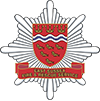The best way to teach children about fire safety is by example.
Let your children see you being sensible and careful about cooking, candles and other potential fire risks.
Find out more about talking to children about fire - and what they should do if there is one.
You can also check out StayWise - a website which brings together the educational resources of the emergency services and key safety-focused organisations. We have done this to support teachers and community safety practitioners.
Fire and children
Fire is one of the most common causes of accidental injury and death among children.
They are naturally drawn to the warmth and light of fire, but without proper guidance this can turn into a dangerous fascination.
The following tips will help keep your children out of harm's way.
Talking to your children
Give children under five clear instructions of what they should and shouldn't do.
With older children, it's better to also explain why.
You will probably need to talk about fire safety more than once, to make sure they have remembered and understood what you have taught them.
Tell them:
- to tell a grown-up if they see matches or lighters lying around
- never to play with matches, lighters or lighted candles
- never to play, or leave toys, close to a fire or heater
- not to put things on top of heaters or lights
- not to pull on electric cables or fiddle with electrical appliances or sockets
- never to switch on the cooker or put anything on top of it
- never to touch any saucepans on the cooker
Fire instructions
It's important to talk through with children what to do if there's a fire - don't avoid it for fear of frightening them.
Children need to know how to react, as there may not be an adult around to tell them what to do if a fire happens.
Here are the basic instructions to give to your children:
- if they see smoke or flames, they should tell someone straight away - a grown-up if possible
- get out of the building as soon as possible
- never go back into the building for anything
- never hide in a cupboard or under a bed - get out of the house and call for help straight away
- find a phone and call 999, and ask for the fire and rescue service - give the address of the fire slowly and calmly
- make sure that children know their address so they can raise the alarm
Know your escape route
Plan an escape route and make sure that everyone in the house is familiar with it, including children, childminders and babysitters.
Keep all exits clear and practise the escape plan with children.
Make your home safe
Here are some measures you can take in your home to make sure your children stay safe:
- don't leave children on their own in a room where there's a fire risk
- keep matches, lighters and candles in a place where children can't see or reach them - and put child locks on cupboards
- put a child-proof fireguard in front of an open fire or heater
- don't let children play or leave toys near a fire or heater
- keep portable heaters in a safe place where they can't be knocked over when they are being used or stored
- never leave children alone in the kitchen when you're cooking and never let them play near the cooker
- make sure electrical appliances are switched off when they are not being used
Plug socket covers
It is very difficult for a child to get an electric shock by playing with a socket, so you shouldn't need to use socket covers.
However, in some instances they may stop young children plugging in heaters or other appliances that could cause burns or start a fire.
You should not rely on socket covers as they are not regulated for safety. It's much better to make sure appliances are safely put away.
Is someone starting fires?
Tell tale signs
- Burn marks on carpets, bedding, clothing and toys
- Charred paper in bins
- Used matches on the floor
- Hidden lighters
- An unusual fascination with fire
- Smoke alarms sounding
- Smell of smoke
Information about our Firewise Scheme
Children with matches
All children have a fascination with fire, but when they start to use fire to express anger or frustration, it becomes dangerous.
Make your home safe:
- Always keep matches and lighters safely out of the reach of children
- Never leave children alone in the house
- Never assume toddlers or infants are incapable of lighting a match or lighter
- Children learn through watching others, so don't play with matches, lighters or fire
- Explain that fire is dangerous and only adults should deal with it
- For older children, teach the appropriate uses of fire under an adult’s supervision
- Teach your children to STOP, DROP and ROLL if their clothes should catch fire
What should you do?
- This behaviour should be recognised and dealt with to ensure that it does not continue into adulthood
- Consider your own actions and how they may influence the behaviour of children for whom you are responsible
- Check your fire alarms and replace batteries if necessary, fit smoke alarms if you don’t have them fitted
- Make a habit of closing all doors before going to bed or if the house is unattended
